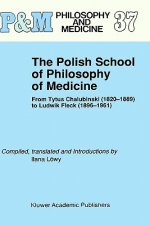
Doručení
Nákupní rádce





Nehodí se? Vůbec nevadí! U nás můžete do 30 dní vrátit
 Dárkový poukaz
V libovolné hodnotě
Dárkový poukaz
V libovolné hodnotě
S dárkovým poukazem nešlápnete vedle. Obdarovaný si za dárkový poukaz může vybrat cokoliv z naší nabídky.
Therapeutic Targets of the TNF Superfamily
 Angličtina
Angličtina
 467 b
467 b
30 dní na vrácení zboží
Mohlo by vás také zajímat


Tumor necrosis factor (TNF) superfamily is a rapidly growing family of cytokines that interacts with a corresponding superfamily of receptors. Ligand-receptor interactions of this superfamily are involved in numerous biological processes ranging from hematopoiesis to pleiotropic cellular responses, including activation, proliferation, differentiation, and apoptosis. The particular response depends on the receptor the cell type, and the concurrent signals received by the cell. Worldwide interest in the TNF field surged dramatically early in 1984 with the cloning and defining of the profound cellular effects of the first member of this family, TNFa. Subsequently, the major influence of TNFa on the development and functioning of the immune system was established. Today, over 20 human TNF ligands and their more than 30 corresponding receptors have been identified. Few receptors still remain orphans. What has emerged over the years is that most TNF ligands bind to one distinct receptor and some of the TNF ligands are able to bind to multiple TNF receptors, explaining to some extent the apparent disparity in the number of TNF receptors and ligands. Yet, in spite of some redundancy in TNF ligand/receptor interactions, it is clear that in vivo spatial, temporal, and indeed cell- and tissue-specific expression of both ligands and their receptors are important factors in determining the precise nature of cellular physiological and pathological processes they control.§TNF superfamily has been the most highly investigated area of basic medical research for over two decades. These investigations have benefited from the enormous growth in our understanding of the principal functions of the immune system and the explosion in the knowledge involved in regulation of normal and pathological immune response. In addition, much has been learned about the molecular mechanisms of programmed cell death and the escape of tumor cells from apoptotic demise and from discovery of the key role played by TNF ligands in this process. As the functioning of these superfamily members is very complex, understanding TNF ligands and their receptor biology requires a mélange of research activities in many different disciplines including organ development, molecular biology, experimental pathology, and immunology. As a consequence of intensive studies in multiple areas over many years, much has been learned. A key role of members of this superfamily in normal functioning of the immune system, autoimmunity, and other fundamental cellular process by which tumor cells develop has been established. Many novel mechanisms involving TNF superfamily members in the disease development process have been defined, and a unified concept and new perspectives have also emerged. For example, abrasions in the innate immune system, so far not considered critical in autoimmunity, have found increasing attention, and TNF-directed and not antigen directed therapy has emerged as the most impressive therapeutic advance in managing autoimmunity in humans. These findings provide a foundation for novel drug design efforts that are poised to utilize newly acquired knowledge. Several of these strategies have already materialized into successful therapeutics such as use of TNF for cancers and anti-TNFa antibodies and TNFR-Fc for autoimmune diseases, and many have advanced to human clinical trials, while many more are still being tested in preclinical settings.§As in other rapidly evolving fields, these advances are not necessarily congruent and are often difficult to organize into a cogent whole. The aim of Therapeutic Targets of the TNF Superfamily is to make readily available the major research important in the exploitation of this family for developing therapeutic strategies for human diseases, in a single volume. Under the auspices of Landes Bioscience, I have undertaken the task to concisely consolidate current knowledge of key TNF superfamily members focusing on both basic aspects and
Informace o knize
 Angličtina
Angličtina




 Jak nakupovat
Jak nakupovat



























